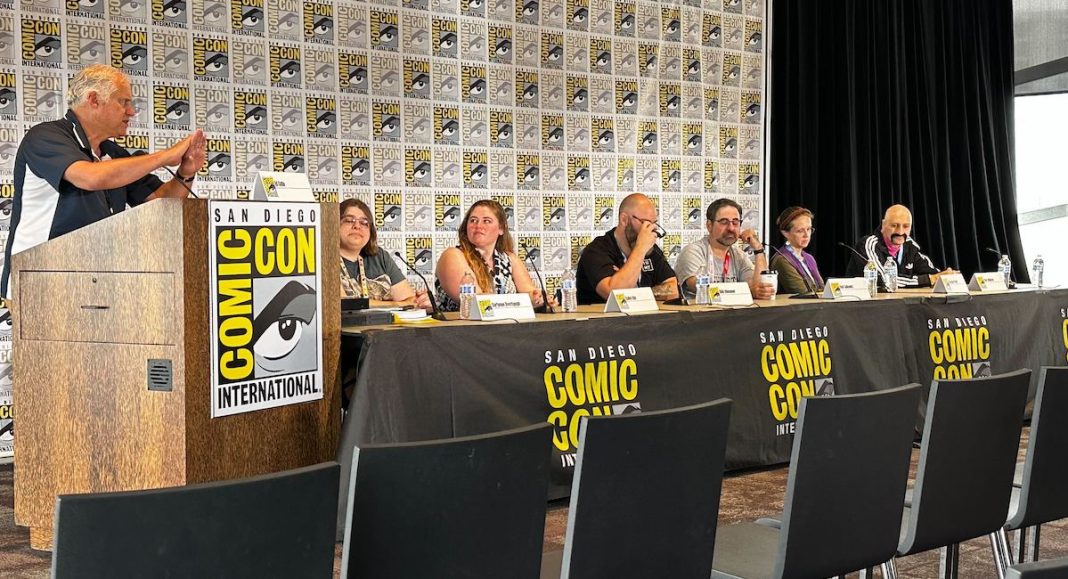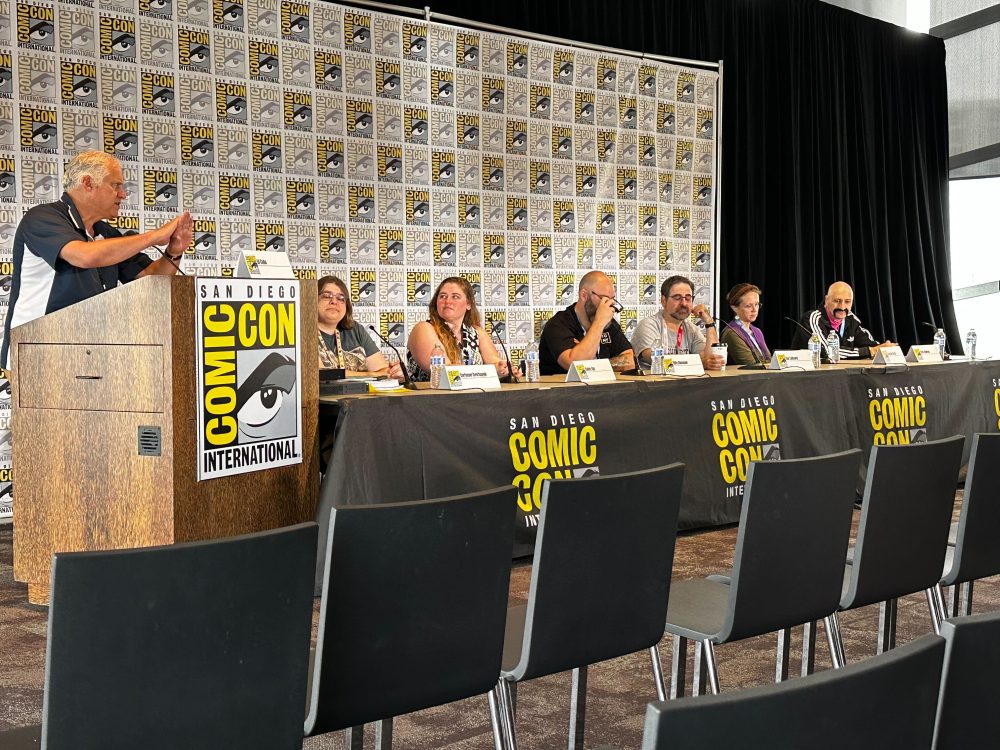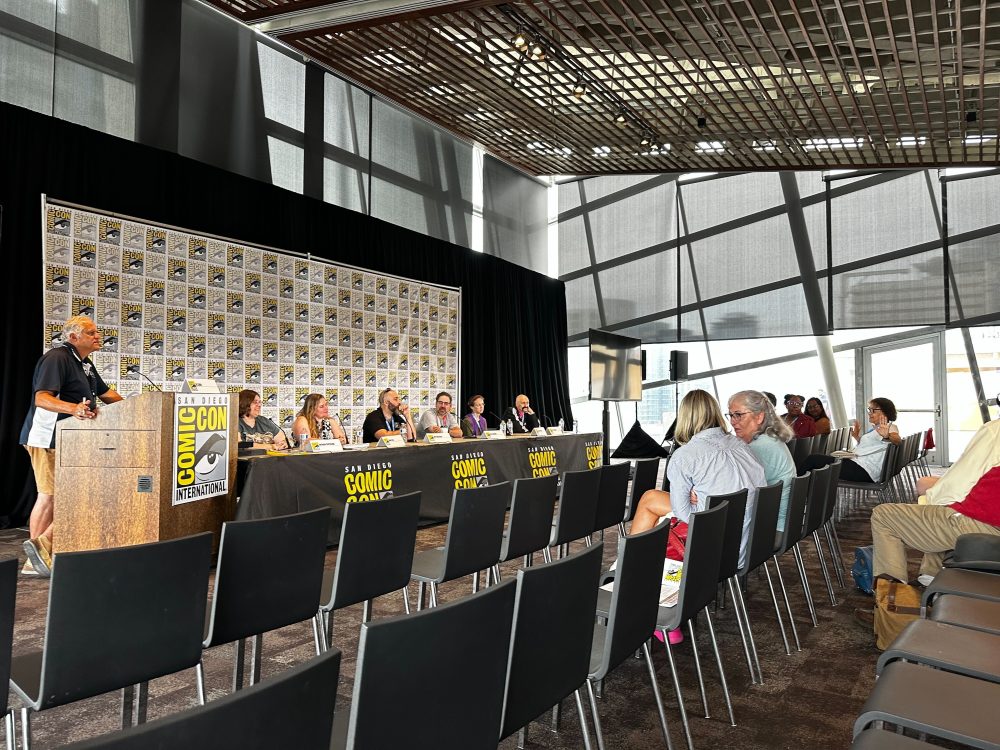By Ani Bundel
San Diego Comic Con is best known for its major fandom moments, the Marvel panels, the cosplay, and the celebrity appearances. However, as this year’s con has proved, the convention doesn’t need Hollywood. One reason is its lesser-known, unsung panels that happen in the bowels of the convention center, in the hotel ballrooms next door, and most importantly, around the corner at the San Diego Public Library.
These education/comics panels cover everything from censorship in comics history, current political issues like how drag bans affect cosplay, and everything in between. So while Hall H was closed down with zero panels on Sunday, July 23, things were practically jumping at the library, with an enthusiastic crowd eager for a discussion on college courses focused on pop culture, how colleges are finding ways to appeal to the fandom communities, and what they can do to improve.
Prof. Ed Catto of Ithaca College led a panel of academics to discuss how much the landscape has changed, and what they can do in the future. They included Syracuse’s Chris Wildrick, SUNY-Cortland Dr. Christina Knopf, University of Washington’s Rob Salkowitz, University of Maine Dr. Billy Obenauer, recent MBA graduate Bailey Day, and freelance educator Darlynne Overbaugh. Wildrick kicked off the panel noting how much the mainstream culture has changed, and that when he first started teaching comics-based courses, he was seen as an oddity; nowadays, when a tour group comes through his “History of Cosplay” course, not only are the students into it, the parents also nod along, as if this is par for the course.
Dr. Billy Obenauer talked about how using comics in the classroom can stimulate imaginations and be a good way to reach students where they live. From telling kids that the proper way to address him (Dear Dr. Obenauer: Correct, Dear Batman: Wrong but Acceptable) to using the imagined bureaucracy that must run superhero collectives to get his business students to problem solve, it’s a way to make learning fun and get kids to tap into their own creativity.
Recent graduate Bailey Day absolutely agreed that her experience as an MBA student at Ithaca, using comics to stimulate creativity, was a brilliant way to learn. As someone who came from a theater background, she’s aware that succeeding in a business degree demands creative solutions, even though most assume that the arts have nothing to do with business. She felt that the more students were exposed to the arts, the better they’ll be to succeed in business (with or without really trying). She championed Itha-con, one of the oldest conventions on college campuses, as great for expanding the horizons of students.
Salkowitz and Obenauer both agreed that students are the reason they are there, and that even if a way of teaching seems strange, if it reaches the students, the college won’t care, as long as it works. Dr. Knopf reminded the audience that it doesn’t matter what works the students are analyzing, Batman or Shakespeare, as long as the students learn to analyze. After all, Shakespeare was once pop culture, it’s all a matter of timing.
As for how academics can integrate pop culture into their own teaching, Overbaugh brought a bunch of books to offer those in the room that she’s found useful in incorporating pop culture into their teaching. The panel turned into an audience engagement discussion with the various teachers in the room. She wound up telling several of the academics in the crowd to come talk to her afterwards one-on-one about how to use pop culture in their various fields. That’s because for most teachers, this really is about knowing your audience, figuring out what speaks to them, and how their subject intersects with their interests. After all, isn’t that what’s teaching is all about?
Miss any of our earlier SDCC ’23 coverage? Find it all here!










